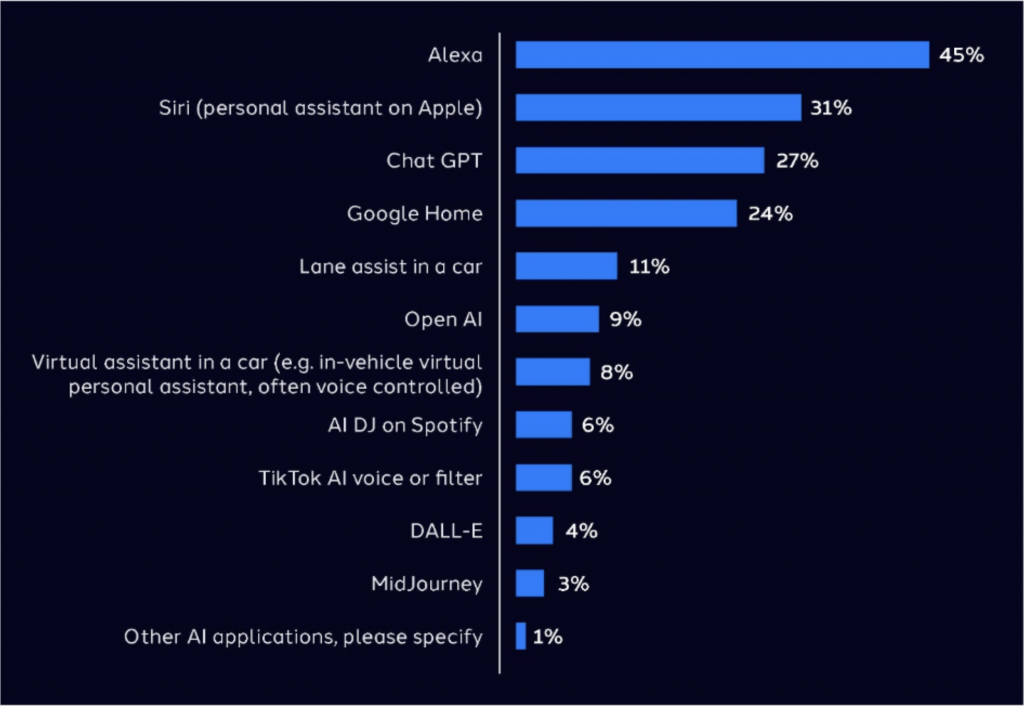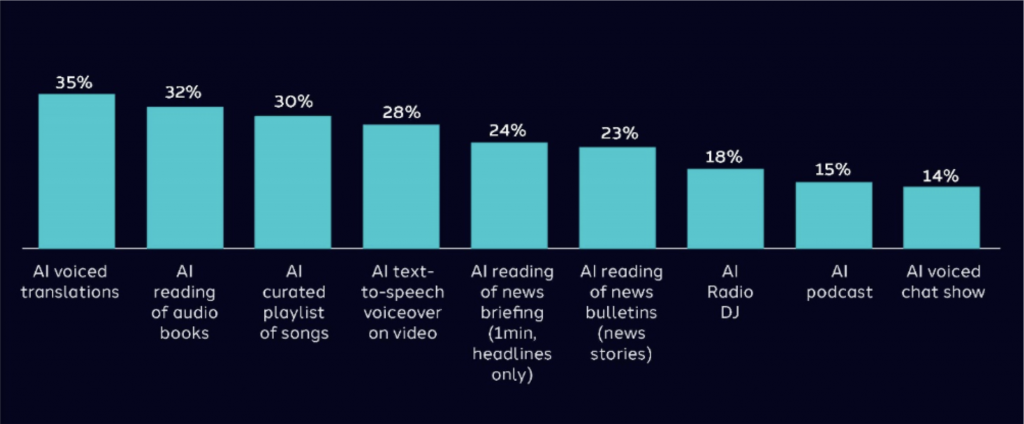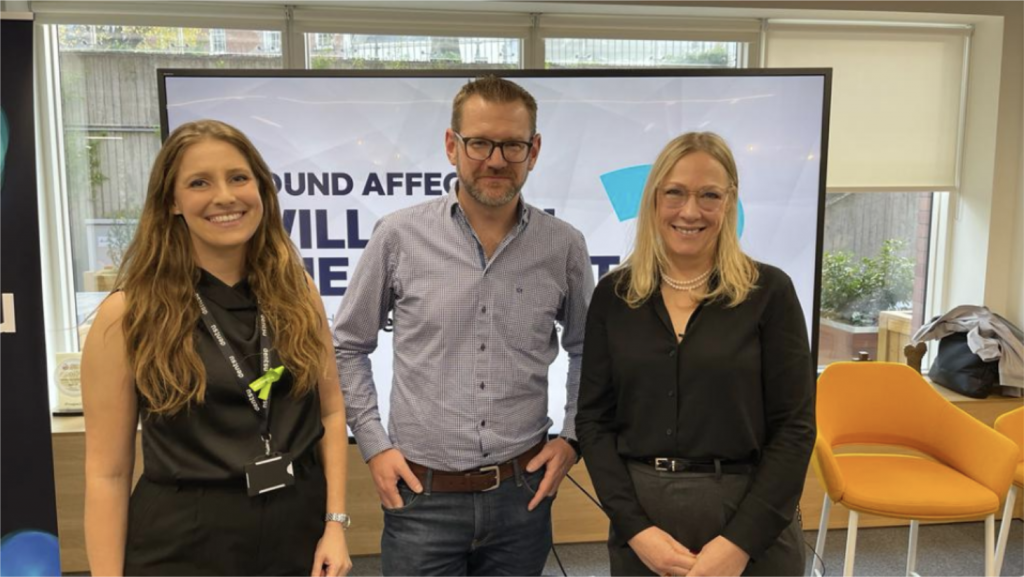Dentsu and urbanmedia Reveal Phase Three of Sound Affects Research
Audio listenership in Ireland is unusual, in that radio remains a particularly strong medium with high levels of listening and engagement throughout the country and across age groups.
Dublin (IE): Dentsu and urbanmedia released the third phase of Sound Affects research on Thursday November 9th, a bi-yearly study focusing on the impact AI will have on audio in Ireland. This research included an experiment with six consumer groups looking at perceptions of, and engagement with, Artificial Intelligence (AI) as well as a nationally representative listening attitudes and behaviour survey.
Background
In 2019, the first phase of Sound Affects explored the impact that digital audio, particularly the rise of podcasts, would have on radio listenership; while in 2021, Sound Affects looked at the impact of Covid-19 on audio behaviour.
We found that radio remains incredibly robust, while audio across radio, streamed music and podcasts had a real revival during Covid-19 with very high levels of trust and engagement with radio.
The ‘new normal’ and audio
In 2023, Sound Affects continued to track listening across radio, streamed music and podcasts. One of the biggest changes compared to 2021 is the impact of the return to the commute on radio listenership. It was clear that many people have returned to audio while driving/commuting to work in the morning – an important time for brands to reach their core audience.
Radio remains the most listened to audio medium in Ireland. According to JNLR over 90% of the population listen to radio weekly, while this research found that Irish adults are listening to an average of over 9 hours of radio a week. People are also more likely to recall what they were listening to on radio (70%) than either streamed music (64%) or podcasts (65%); while two in five people (41%) would move radio station if their favourite radio presenters moved there.
Listener segments
In 2021, Sound Affects found four new listener segments, created using information about adults’ audio attitudes and behaviours. This was a new way to look at the way people listen to radio, podcasts and music beyond segmenting by gender or age.
The four segments were:
- Audio Addicts
- Purposeful listeners
- Companion listeners
- Light listeners
The way they engaged with and chose to listen to audio differed across the groups. In 2023, Sound Affects looked at these segments again. The research found that the:
-
- Audio Addict group has grown, now accounting for over a third of the population (37%). These people are very engaged with audio, tend to be younger and male and listening to audio accounts for 20% of their time spent with media. This is a really exciting space for media owners and for brands as they represent people who are seen as hard to reach by advertising on traditional media.
- Companion listeners are another exciting group for radio stations in particular as they spend a large amount of time (nearly 15 hours a week on average) listening to the radio. These listeners tend to be a bit older and female and make up nearly a quarter of adults (23%).
- Purposeful listeners make active choices around what they listen to and are the most prolific listeners to streamed music. They tend to choose audio based on mood and are the most ad-avoidant of the groups, making them less important for brands in the audio space. Although they also listen to a significant amount of audio, they spend a very high proportion of their media time online.
AI and Audio
AI has grown and evolved at unprecedented levels. Open access AI algorithms gained much popularity and coverage in 2023, becoming accessible to anyone with internet access. The research found only one in four people (23%) have not used any application of artificial intelligence, with the most commonly used applications being in home smart speakers or personal assistants like Alexa (45%) and Siri (31%) followed by Chat GPT (27%).
 Figure 1: Adults prior use of AI applications
Figure 1: Adults prior use of AI applications
However, what is perceived as being AI differs; and worries, suspicion and discomfort associated with AI increase as people age. The impact on jobs was a particular concern in the qualitative study.
“AI is everywhere as far as I can see…I think we’re using AI a lot more than we think we are…people will lose jobs because of it…but there are so many huge things coming down the line”
In contrast, curiosity regarding AI is high across all age groupings – with greater variation in other positive emotions such as intrigue and excitement. Despite qualitative findings illustrating a great diversity in peoples’ knowledge and understanding of AI, the survey found that most people (73%) claim to have some level of understanding of AI and 1 in 5 claim to know exactly what is meant by AI. Asked about openness to potential future applications of AI, particularly across audio, AI voiced translations were the most positively perceived applications.
 Figure 2: Openness to potential applications of AI
Figure 2: Openness to potential applications of AI
Can consumers identify AI content?
Using an experimental design, consumer groups were exposed to two audio clips – one was AI generated audio content and the second was a breakfast radio clip to explore their perceptions, interest and engagements with AI. Using professional cloning of two radio breakfast hosts, the AI content was written by Chat GPT and voiced by professionally cloned AI voices. Four groups of participants were not told that they would be listening to AI and very few consumers picked up that it could be AI generated. The research demonstrated that future developments in AI will further reduce people’s ability to differentiate between ‘real’ and AI generated voices.
There was a lot of discomfort with the idea of AI voiced radio within the consumer groups, particularly amongst those who were primed and aware that the content they were listening to would be AI. Overall radio listeners are hesitant to believe that AI will replace the radio presenters they currently know and love, although they are unsure what might be coming down the tracks.
“Whether we like it or not AI is going to be part of the world…I don’t think it will capture the banter and rapport between people on Irish radio stations”

From left to Right: Claire O’Rourke, Brian McCarthy, Dael Wood
“We set out to understand AI’s impact on radio and what we learnt is that AI is going to impact audio, but it’s about understanding where and when to use it. There are clear opportunities that AI can unlock and there are clear places where AI is not ready to impact.”
Dael Wood, Strategic Consulting Director, dentsu
“Sound Affects 3 has again provided us with some really insightful findings which will help us lead the Irish audio market in an exciting direction. While we don’t see AI replacing presenter or listener interactions anytime soon it does provide some incredible product and personalisation opportunities that we can bring to clients. The research also confirms the vital role radio, and the wider audio ecosystem, plays in Irish peoples lives and the increased levels of “audio addicts” highlights the importance of it as a medium. It also reminds us some more traditional thinking remains valid including taking advantage of the captive “in car audience” which has clearly returned post COVID”
Brian McCarthy, Commercial and Operations Director, urbanmedia
– ENDS –
For more insight and information about the research contact
Claire O Rourke, Research Director, dentsu.
Dael Wood, Strategic Consulting Director, dentsu.
Brian McCarthy, Commercial and Operations Director, urbanmedia.


